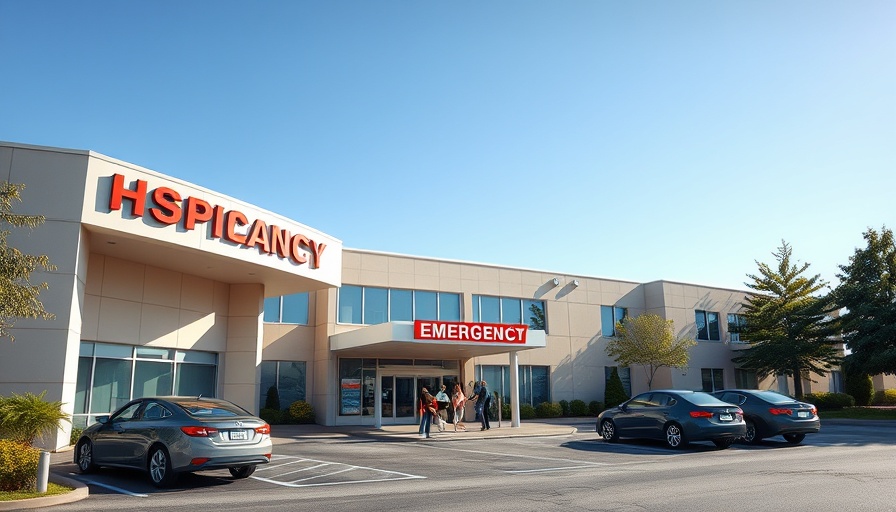
Emergency Funding: A Lifeline for Rural Hospitals
The Blythe hospital, like many rural healthcare institutions, faced imminent closure due to budgetary constraints and dwindling patient numbers. With emergency state funding now providing temporary relief, it raises the critical question of sustainability for healthcare in remote areas. With California leading national conversations on healthcare access, this situation mirrors larger systemic flaws affecting rural hospitals across the country.
The Broader Impact of Rural Hospital Closures
When rural hospitals shut down, the impact ripples far beyond the immediate community. In California, more than 50 rural hospitals have closed over the past decade. This trend often leads to longer travel times for patients seeking essential medical care, increased emergency room congestion in urban centers, and adverse health outcomes, particularly for vulnerable populations. Such closures not only provoke concern among residents but also disrupt the local economy, where healthcare is frequently a primary employer.
Historical Context: What Led to the Crisis?
The financial struggles of rural hospitals have deep roots. Factors such as reduced Medicaid reimbursement rates, increasing operational costs, and a typically older patient demographic contribute to the struggle. Hospitals often find themselves battling not just for survival but also for the ability to provide adequate services to their community. The pandemic exacerbated these issues, further depleting resources and personnel as hospitals scrambled to meet the demand for COVID-19 care.
Community Response: Mobilization and Advocacy
In Blythe, local residents and healthcare advocates have rallied to support their hospital. Community meetings have become forums for discussing potential long-term solutions, from increased state support to innovative healthcare delivery models suited for rural settings. Grassroots movements are crucial, as they not only raise awareness but also remind lawmakers that healthcare is a vital service deserving protection and investment.
What’s Next? Future Predictions for Rural Healthcare
While Blythe’s hospital has been temporarily saved, the future remains uncertain. Experts warn that without fundamental changes — such as expanding telehealth initiatives and diversifying funding streams — many rural hospitals may still face closure. As healthcare shifts toward outpatient services, rural centers could thrive by adapting their models to meet changing patient needs. However, continuous advocacy for funding and resources will be essential to ensure these institutions don’t just survive, but also thrive.
Decisions to Consider: The Role of the Community
For the residents of Blythe and similar rural towns, awareness and proactive involvement in healthcare discussions is critical. Community members should ask themselves how they wish to see their local hospital evolve. Are there potential partnerships with nearby larger facilities? What community health programs can be developed to enhance care? By participating in these conversations, residents can influence the outcome and foster a system that accommodates their unique healthcare needs.
Call to Action: Advocate for Sustainable Healthcare
As Blythe hospital navigates this pivotal moment, now is the time for locals to take action. Advocate for continued state support and push for policies that protect rural healthcare. Engage with local representatives, attend community meetings, and share your story to highlight the important role the hospital plays in your lives. Your voice is effective and essential in shaping the future of healthcare in your community.
 Add Row
Add Row  Add
Add 



Write A Comment